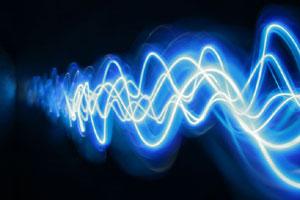I am a huge fan of the concept of quantum computing simply because I liked thinking about some of this stuff in physics and physical chemistry. Ran across this article this morning in Hacker News and figured I'd share. Enjoy!
Spooky computers closer to reality
Solid-state quantum processing demonstrated.
 The new processor takes advantage of quantum entanglement.Alamy
The new processor takes advantage of quantum entanglement.AlamyThe computers of tomorrow could be quantum not classical, using the quantum world's strange properties to vastly increase memory and speed up information processing. But making quantum computing parts from standard kit has proved difficult so far.
Now physicist Leonardo DiCarlo of Yale University, New Haven, and his colleagues have made the first solid-state quantum processor, using similar techniques to the silicon chip industry. The processor has used programs called quantum algorithms to solve two different problems. The work is published in Nature1.
Classical systems use a series of 0s and 1s, or bits, to convey information. Two bits, for example can be combined as either 00, 11, 01 or 10. But quantum systems have a property called superposition, where all these combinations can exist at once. This vastly increases the amount of information that can be stored and the speed at which it can be processed.
Quantum bits, or qubits, can also be entangled — the state of one qubit influences the state of another even at a considerable distance. A quantum computer would use entangled qubits to process information.
Solid work
Quantum algorithms have been processed before, but only in exotic systems using lasers or ions suspended with strong magnets. To make something more similar to a computer, a solid-state system is needed.
DiCarlo made his device out of two transmon qubits. These are tiny pieces of a superconducting material consisting of a niobium film on an aluminium oxide wafer with gaps etched into it. A current can 'tunnel' across these gaps — another special property of the quantum world, where waves and particles can cross barriers without breaching them. The two qubits are separated by a cavity that contains microwaves, and the whole system connected to an electric current.
“The appeal of our processor is that it is an all-solid-state device.”
Leonardo DiCarlo
Yale University
"The appeal of our processor is that it is an all-solid-state device," says DiCarlo. It was made using standard industrial techniques. But the analogy with ordinary computers shouldn't be overstretched, he cautions — the device works at just a fraction of a degree above absolute zero and requires special refrigeration technology.
The researchers controlled the system using a microwave 'tone' with a frequency that causes the qubits to become entangled. A voltage pulse is then applied to control how long the two qubits remain entangled and in their superpositional state. Longer entanglement allows the qubits to process more complex problems.
DiCarlo was able to keep the qubits entangled for a microsecond, which is the state of the art, he says.
Qubit calling
The system processed two algorithms written specially for quantum systems.
The first is Grover's search algorithm, also known as the reverse phone book search, where someone's number is known but not the name. The processor essentially reads all the numbers in the phone book at once to find the single correct answer. "At the end the qubit will be in one state, not superposed, and that's the answer," says DiLorio.
The second, more simple, algorithm, the Deutsch-Jozsa algorithm, tests whether the flip of a coin is fair or not.
DiCarlo's processor got the reverse phone book search right an impressive 80% of the time and the coin-flip algorithm right about 90% of the time.
To read out the answer, DiCarlo used a microwave tone at the same frequency as the cavity in the system. "Depending what state the qubit is in, the cavity will resonate at a certain frequency. If the tone is transmitted through the cavity, we know it's in the right state," he says.
But this technique could not read out the answer in a system with many more qubits, says quantum-computing expert Hans Mooij from the Delft University of Technology in the Netherlands. The development of the processor is good news Mooij adds. "This is a necessary step," he says. "If this can be done, the next thing can be done."
DiCarlo is cautious. "We've made a very simple quantum processor," he says. "It's by no means a quantum computer."
He is working to give the processor more qubits, and so more processing power. He thinks that scaling up to three or four quibits will be relatively straightforward, but beyond that the problem becomes a lot harder, and the coherence time needed will be very difficult to attain. Mooij agrees: "From three or four to ten they will need to make a big step again."
-
References
- DiCarlo, L. et al, Nature, doi:10.10383/nature08121 (2009)